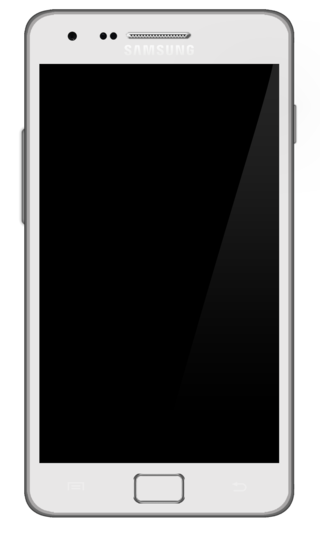
Meizu Technology Co., Ltd. is a Chinese consumer electronics manufacturer based in Zhuhai, Guangdong. Founded in 2003 by Jack Wong, Meizu began as a manufacturer of MP3 players and later MP4 players. In 2008, Meizu moved its focus to smartphones. Meizu is the 11th largest smartphone manufacturer in the world, and sold over 20 million units in 2015. In February 2015, Alibaba invested US$590 million in Meizu, acquiring an undisclosed minority stake.
Google Nexus is a discontinued line of consumer electronic devices that run the Android operating system. Google managed the design, development, marketing, and support of these devices, but some development and all manufacturing were carried out by partnering with original equipment manufacturers (OEMs). Alongside the main smartphone products, the line also included tablet computers and streaming media players; the Nexus started out in January 2010 and reached its end in October 2016, replaced by Google Pixel.

The LG Optimus 2X is a smartphone designed and manufactured by LG Electronics. The Optimus 2X is the world's first smartphone with a dual-core processor and the third phone in the LG Optimus-Android series. LG introduced the Optimus 2X on December 16, 2010 and the device first became available to consumers in South Korea in January 2011. It was also launched in Singapore on March 3, 2011. The Optimus 2X runs the Android 2.3 software version since the upgrade in November 2011, but the latest offering is Android 4.0. The phone holds the record for the longest update holdout, taking 16 months to receive a firmware update from Android 2.2 to 2.3.

The Samsung Galaxy S II is a touchscreen-enabled, slate-format Android smartphone designed, developed, and marketed by Samsung Electronics, as the second smartphone of the Samsung Galaxy S series. It has additional software features, expanded hardware, and a redesigned physique compared to its predecessor, the Samsung Galaxy S. The S II was launched with Android 2.3.4 "Gingerbread", with updates to Android 4.1.2 "Jelly Bean".

The Meizu M9 is a Chinese smartphone designed and promoted by the Meizu Technology Co., Ltd. which runs on Flyme OS. It was launched on January 1, 2011, resulting in buyers lining up overnight to enter the stores to purchase the device.

The Samsung Galaxy S5 is an Android-based smartphone unveiled, produced, released and marketed by Samsung Electronics as part of the Samsung Galaxy S series. Unveiled on 24 February 2014 at Mobile World Congress in Barcelona, Spain, it was released on 11 April 2014 in 150 countries as the immediate successor to the Galaxy S4. As with the S4, the S5 is an evolution of the prior year's model, placing a particular emphasis on an improved build with a textured rear cover, IP67 certification for dust and water resistance, a more refined user experience, new security features such as a fingerprint reader and private mode, expanded health-related features including a built-in heart rate monitor, a USB 3.0 port, and an updated camera featuring speedy auto-focus through phase-detection. The video resolution has been upgraded to 2160p (4K) and the frame rate at 1080p has been doubled to 60 for a smooth appearance.

The Meizu MX3 is a smartphone designed and produced by the Chinese manufacturer Meizu, which runs on Flyme OS, Meizu's modified Android operating system. It is a previous phablet model of the MX series, succeeding the Meizu MX2 and preceding the Meizu MX4. It was the first smartphone with 128 GB of internal storage. It was unveiled on September 2, 2013, in Beijing.

The Samsung Galaxy Alpha (SM-G850x) is an Android smartphone produced by Samsung Electronics. Unveiled on 13 August 2014, the device was released in September 2014. A high-end device, the Galaxy Alpha is Samsung's first Android-powered smartphone to incorporate a metallic frame, although the remainder of its physical appearance still resembles previous models such as the Galaxy S5. It also incorporates Samsung's new Exynos 5430 system-on-chip, which is the first mobile system-on-chip to use a 20 nanometer manufacturing process.

The Meizu MX4 is a smartphone designed and produced by the Chinese manufacturer Meizu, which runs on Flyme OS, Meizu's modified Android operating system. It is a previous phablet model of the MX series, succeeding the Meizu MX3 and preceding the Meizu MX5. It was unveiled on September 2, 2014 in Beijing.

The Meizu MX4 Pro is a smartphone designed and produced by the Chinese manufacturer Meizu, which runs on Flyme OS, Meizu's modified Android operating system. It is a previous phablet model of the MX series, representing a more powerful version of the Meizu MX4. It was unveiled on 19 November 2014 in Beijing.

The Meizu MX2 is a smartphone designed and produced by the Chinese manufacturer Meizu, which runs on Flyme OS, Meizu's modified Android operating system. It is a previous model of the MX series, succeeding the Meizu MX and preceding the Meizu MX3. It was unveiled on November 27, 2012 in Beijing.
The Meizu M3S is a smartphone designed and produced by the Chinese manufacturer Meizu, which runs on Flyme OS, Meizu's modified Android operating system. It is a current model of the M series. It was unveiled on June 13, 2016 in Beijing.

The Meizu PRO 5 is a smartphone designed and produced by the Chinese manufacturer Meizu, which runs on Flyme OS, Meizu's modified Android operating system. It is the company's first model of the flagship PRO series. It was unveiled on September 23, 2015, in Beijing.
The Meizu M3E is a smartphone designed and produced by the Chinese manufacturer Meizu, which runs on Flyme OS, Meizu's modified Android operating system. It is a current model of the M series. It was unveiled on August 10, 2016, in Beijing.
The Meizu M5 is a smartphone designed and produced by the Chinese manufacturer Meizu, which runs on Flyme OS, Meizu's modified Android operating system. It is the company's latest model of M series, succeeding the Meizu M3 Max though its true predecessor is the Meizu M3. It was unveiled on December 6, 2016 in Beijing.

The Samsung Galaxy J3 (2016) is an Android smartphone manufactured by Samsung Electronics and was released on May 6, 2016.

The Meizu PRO 6 Plus is a smartphone designed and produced by the Chinese manufacturer Meizu, which runs on Flyme OS, Meizu's modified Android operating system. It is the company's latest model of the flagship PRO series, succeeding the Meizu PRO 6. It was unveiled in November 2016.
Oppo phones are smartphones produced by the partially state-owned Chinese company Oppo, running in several countries.
The Samsung Galaxy J2 Core is a smartphone manufactured by Samsung Electronics. It was released in August 2018 with its operating system Android 8.1.0 "Oreo". It is the first Android Go based phone by Samsung.
The Samsung Galaxy F62 is a mid-range Android smartphone manufactured by Samsung Electronics as part of its Galaxy F series. It is the second phone to be released in the series. It has a 7000 mAh battery, a quad camera setup with a 64 MP main camera, as well as a 12 MP ultrawide camera, a 5 MP macro camera and a 5 MP depth sensor, a 6.7 in (17 cm) Super AMOLED Plus display and the Exynos 9825 SoC previously used in the Samsung Galaxy Note 10 and Note 10+ flagship smartphones.














